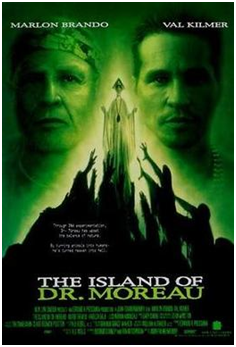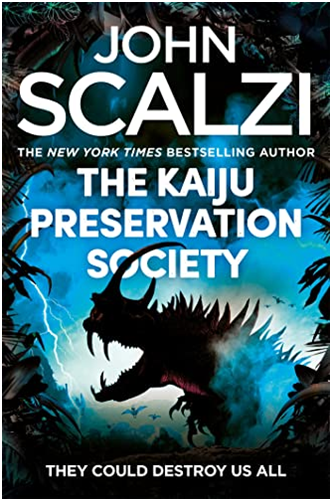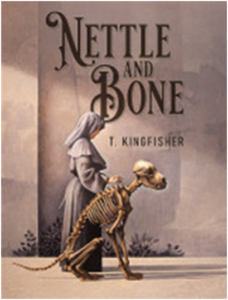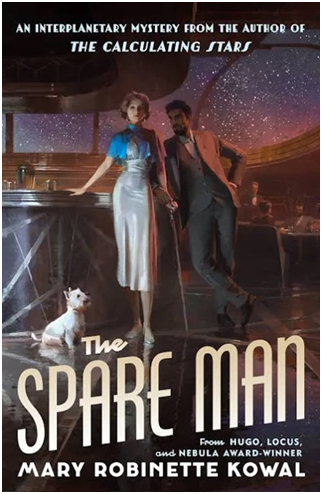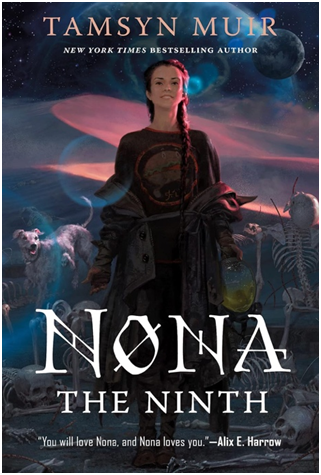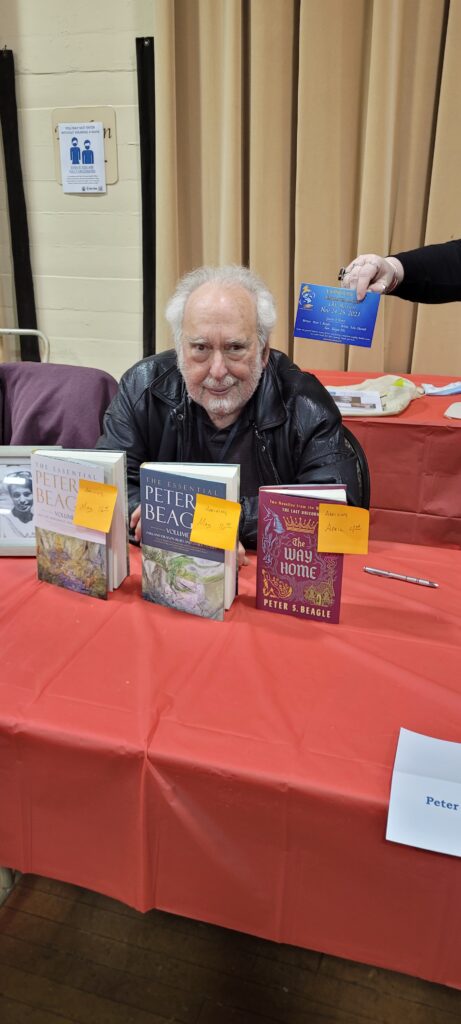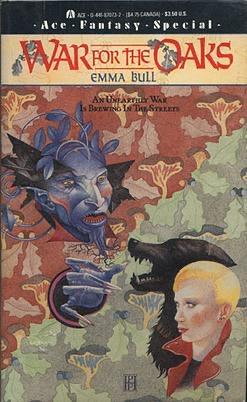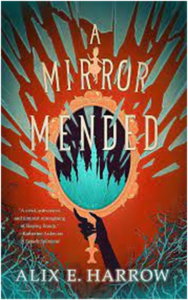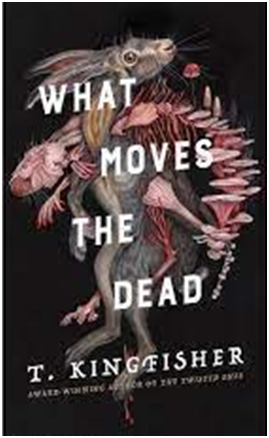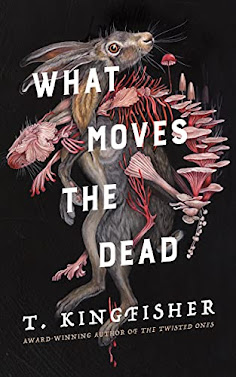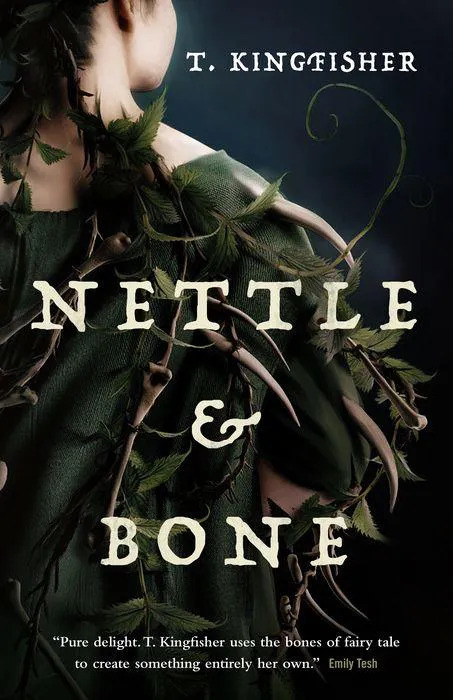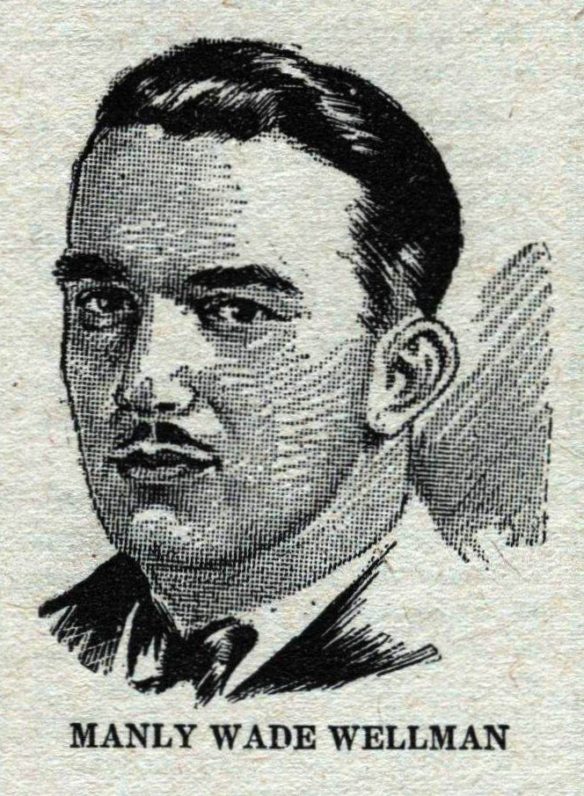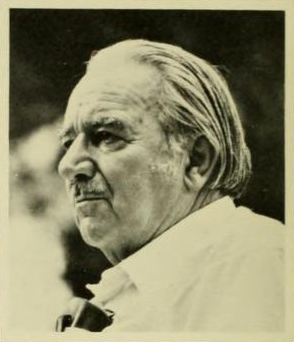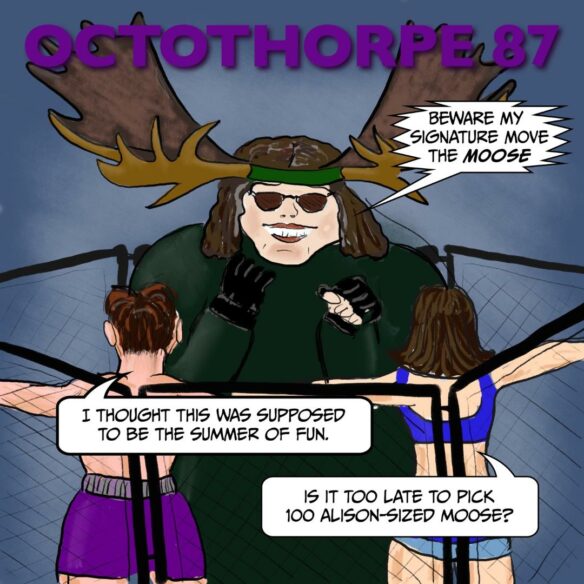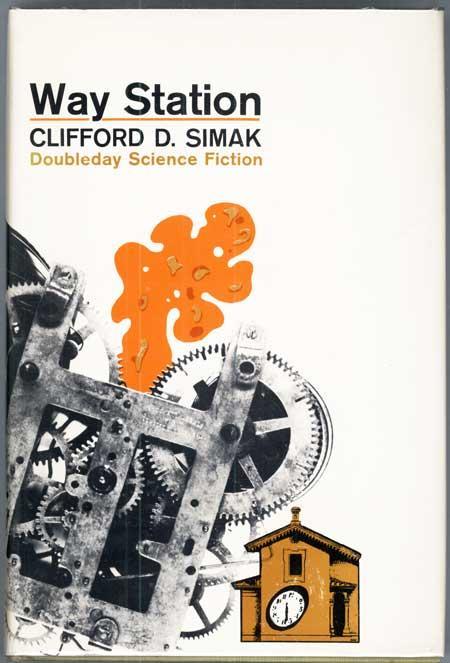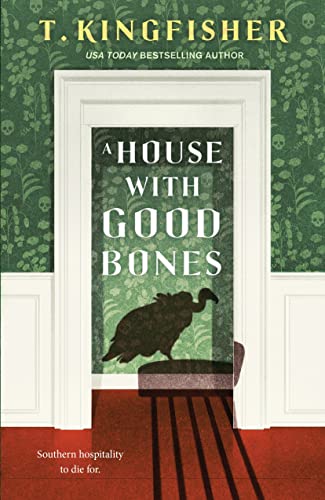(1) HE LIED. THANK GOODNESS! Former Doctor Who showrunner Steven Moffat is writing an episode due to air in Ncuti Gatwa’s first season as the Fifteenth Doctor: “Steven Moffat returns to write episode for new season of Doctor Who”.
….Speaking on his return to the Whoniverse, Steven Moffat says:
“Yes, okay, fair enough – apologies to everyone I’ve very slightly misled – I am in fact writing an episode of the series of Doctor Who. Exactly like I said I never would. What can I tell you? There was begging, there was pleading but finally Russell agreed to let me have another go – so long as I got out of his garden. Working with old friends and a brand new Doctor I couldn’t be happier. Sorry I was a bit reticent on the subject for so long. It was all part of an elaborate plan that would have delighted millions but at the last minute I forgot what it was.”
(2) OCTAVIA E. BUTLER SCIENCE FICTION FESTIVAL. The Pasadena middle school once attended by — and in 2022 renamed for — the author Octavia E. Butler will hold its third Science Fiction Festival on Friday reports LAist in“Student Sci-Fi”. (The event schedule is here: “Octavia E. Butler Library Science Fiction Festival 2024”.)
…The multi-award winning and best selling author graduated from what was then Washington Junior High in 1962 and wrote some of her earliest stories while a student.
School librarian Natalie Daily organized the Octavia E. Butler Magnet’s first science fiction writing contest in 2020, the same year the school’s library was renamed in her honor. The school itself was renamed two years later.
“I want [students] to realize that their ideas matter,” Daily said. “I think that Butler is a testament to that, you know, she was writing stuff and thinking about really, really deep ideas when she was a student here.”…

(3) KINGFISHER AND COMPANY. Sarah Gailey interviews the Tor team behind the publication and promotion of T. Kingfisher’s new book. “The Mess That the Editor Fixes: What Feasts at Night by T. Kingfisher” at Stone Soup.
T. Kingfisher has been one of my favorite horror authors since I read The Twisted Ones, one of the only novels that has ever made me scream out loud with genuine terror. In 2022, Kingfisher released the Locus Award-winning novella What Moves the Dead, an early entry into the now-thriving world of Fungal Gothic Literature. It’s a tale of declining wealth and reanimation (sort of), and it includes some fascinating worldbuilding conversations about social constructions of gender. I got to connect with Kingfisher and the production team at Tor to discuss the upcoming sequel to What Moves the Dead. What follows is a deep dive into the process behind What Feasts at Night….
Gailey: Okay, T. Kingfisher, tell us what you do.
T. Kingfisher, Author, What Feasts at Night: I write the mess that the editor fixes. I always say that my dream is to sit in a room and write and have people shove food and checks under the door, and Tor is like “Here is a sandwich and a check and we wrote a list of all the advertisements the book has appeared in on the napkin.” It’s basically the perfect relationship, so far as I’m concerned. Lindsey Hall, my editor, is an absolute champ!…

(4) XENOMORPHS ON THE LOOSE AGAIN. Variety interviews the director of the next Aliens movie in “’Alien: Romulus’ Trailer: Fede Alvarez Teases Facehuggers, Frights”.
…“Alien: Romulus” marks the seventh film in the “Alien” franchise, and the overall ninth involving acid-blooded xenomorphs, if you include the “Aliens vs. Predator” crossover films. Writer-director Álvarez is about to complicate its already convoluted timeline even further with “Romulus,” which premieres August 16. But the more important question is, will it be better than some of the more lackluster chapters in this ongoing saga — which there are probably more of than great ones?…
How tough was it to find a balance between the little green computer monitors of “Alien” and the futuristic technology of the more recent films?
I know a lot of people felt like it makes no sense. But I think we make the mistake when we watch the Nostromo and assume that’s how the entire universe looks like. If I decide to make a movie on Earth today, and I go to the Mojave Desert and I take an old truck because a guy drives a Chevy, if you’re an alien, you’re going to go, “That’s what the world looks like.” But it doesn’t mean there’s not a guy in a Tesla in the city, which would be the “Prometheus” ship. The first movie is truck drivers in a beat-up truck. “Prometheus” is the ship of the richest man in the world….
(5) PRE-WORLDCON TOUR OF SCOTLAND OFFERED. Val and Ron Ontell are fans who have been running tours in connection with Worldcon since 1987. Past tours have included Britain, Australia, Ireland, Japan, and Scandinavia/St. Petersburg. They are currently organizing one for two weeks in Scotland beginning in Edinburgh and ending in Glasgow the day before the con begins.
Some of the highlights: Loch Ness, Inverness and the Highlands, the Isles of Arran and Skye, Stirling Castle, a ride on the Jacobite Steam Train (aka the Hogwarts Express), going into a Concorde SST at the National Museum of Flight, having a traditional Scottish dinner (including haggis), and attending the Edinburgh Tattoo. Click for the itinerary.
For complete information, visit their website at <ontell.org/Scotland> or contact them at <[email protected]>.
(6) FREE FLYER. Flaco, the escaped Central Park Zoo owl, died on February 23. The owl’s story is the premise for a book competition offering a $20,000 prize from Brazen House Inc. Contact [email protected] for full details.
The story of Flaco, the owl from Central Park Zoo, has touched people all over the world as a tale of inspiration and admonition for humans. The Eurasian eagle-owl escaped from his cage after thirteen years in captivity and moved about fearlessly in the concrete jungle of New York skyscrapers, pursuing freedom and a little perch he could call home. He found neither in that rich patch of America that stands for freedom and opportunity. Even though he had a legion of human supporters rooting for him, the authorities shadowed him, trying to get him back into his cage. As for finding a home, every inch of the land had been claimed by humans. After a year of striving and struggling, Flaco met with a tragic death when he crashed into a building on the Upper West Side.
If Flaco could speak to us from the other side of the veil, what would he say about his captive life and the brief freedom he enjoyed? What resentments would he have about the humans who for years kept him in a cage as an object of mere curiosity? What were his most joyful moments in freedom? What did he pine for most as he ranged over the concrete jungle of New York City?
Brazen House is soliciting proposals for an imaginative novel that will tell his story through his eyes and reflect on how humans regard other species. The book is intended for young adults, but the story and the writing should resonate with older readers as well. And it should make a distinguished contribution to the literature for young readers in enhancing their appreciation of other species with whom we share this Earth…
The submission should be exclusive to Brazen House. The winning proposal will be announced on September 1, 2024….
Somtow Sucharitkul sent the news item to File 770 with a disclosure, “I’m doing a new trilogy with his publishing house and I’m on his committee to pick the winning book for the 20,000 prize.”
(7) E PLURIBUS YRTH. And since we’ve mentioned Somtow’s new trilogy from Brazen House…

Yrth Trilogy by S.P. Somtow
An epic series by World Fantasy Award winning author S.P. Somtow
A timeless story reinvented for the 21st Century: with the sweep of Lord of the Rings and the spectacle of Dune
An eon from now, humans are mostly a memory, wiped out by war and their own hubris, living on the fringes. Yrth is a desolate wasteland, but life has started to return. New races have begun to live in the wasteland, finding their own harmony with their environment. Some have evolved from what were once thought of as animals. Others were created to make real the myths and imaginings of the departed humans. These races have created pockets of utopia.
But will they repeat the mistakes of past, and return Yrth to the realm of shadow? Can many species become a united world?
(8) LIGHTS…CAMERA…WATCH MEDIA! “Sci-Fi Series ‘Murderbot’ Officially Begins Filming at Apple TV+” reports Midgard Times.
The upcoming Apple TV+ sci-fi series, “Murderbot” has officially begun filming this Monday in Toronto, Canada. Starring Alexander Skarsgård in the leading role, the series is based on the award-winning books by Martha Wells.
“Murderbot” is described as an action-packed sci-fi series based on Wells’ award-winning novels about a self-hacking security android who is appalled by human emotion but lured to its weak “clients.” Murderbot must suppress its free will and perform a perilous mission when all it truly wants is to be left alone to watch future soap operas and find out its place in space….
…The 10-episode Murderbot is expected to take more than three months to complete the production. As per the current schedule, the sci-fi series will officially wrap filming on June 27, 2024. The series comes from Chris and Paul Weitz, who are writing, directing, and producing it, while also acting as showrunners….
(9) THY THREE SUNS. Critic Inkoo Kang tells readers of The New Yorker, “’3 Body Problem’ Is a Rare Species of Sci-Fi Epic”.
…“3 Body Problem” belongs to an all too rare breed: mainstream entertainment that leads its viewers down bracingly original speculative corridors. The scenario the show ultimately posits bears little resemblance to traditional sci-fi fare; the aliens are coming, but not for another four hundred years, putting humanity on notice for an encounter—and possibly a war—that’s many lifetimes away. This time span is as much a curse as a blessing. Forget the science for a second; what kind of political will—totalitarian or otherwise—is required to keep centuries of preparation on track? How do we get the über-rich to contribute to a new space race in a way that also flatters their egos? And what resources does it take to accelerate scientific discovery to a breakneck pace?…
(10) M. EMMETT WALSH (1935-2024). Character actor M. Emmet Walsh died March 19 at the age of 88 reports Variety.
…In Ridley Scott’s 1982 “Blade Runner,” Walsh was Harrison Ford’s LAPD boss, while he played the vicious private detective Loren Visser in the Coen brothers’ directing debut “Blood Simple.” Wearing a sickly yellow suit, Pauline Kael said he was the film’s “only colorful performer. He lays on the loathsomeness, but he gives it a little twirl — a sportiness.”
His other roles included the corrupt sheriff in the 1986 horror film “Critters” and a small role as a security guard in “Knives Out.”…
He also did voice work in Iron Giant.
(11) TODAY’S BIRTHDAY.
[Written by Cat Eldridge.]
Born March 20, 1932 — Jack Cady. (Died 2004.) Jack Cady’s Wikipedia page says he’s known “mostly as an award-winning writer of fantasy, horror, and science fiction. He won the Nebula Award, the World Fantasy Award, and the Bram Stoker Award.” I’m betting that he’s much more than just his ‘Wards, don’t you think?
So let’s see… Ghost stories are a good place to begin I think. McDowell’s Ghost gives a fresh spin on the trope of seeing a War Between The States ghost, and The Night We Buried Road Dog is another ghost story set in early Sixties Montana.

Now The Well is not quite a ghost story as such but it’s a haunted house story of sorts heavy on the horror, really heavy on the horror.
Not a ghost story as such but equally impressive is Inagehi which is the story of a young Cherokee woman who inherits a mountain and the mystery of her father’s death.
Now Dark Dreaming with Carol Orlockreminds me just a bit of He Who Shapes in its use of the darker side of dreams. Well much darker than Zelazny ever did. Don’t read later at night.
Cady’s The Man Who Could Make Things Vanish is a tale of a man who make anything disappear against an organisation that might or might exist wanting to rule the world.
He wrote more novels than that but those are the ones I’m familiar with.
He also wrote quite a bit of short fiction, some sixty pieces I figure. Phantoms: Collected Writings, Volume 1 and Fanthoms: Collected Writings, Volume 2, both done a decade ago, collect about forty-five pieces of short fiction. Both are available at the usual suspects.
Those ‘Wards? He won a Nebula and Stoker for a novella, “The Night We Buried Road Dog”; the World Fantasy Award was for a short collection, The Sons of Noah & Other Stories; and the final one was the International Horror Guild Award a warded for Outstanding achievements in the field of Horror and Dark Fantasy.
(12) COMICS SECTION.
- Breaking Cat News continues the story on the newspaper cartoon industry.
- Non Sequitur has the start of a writing career.
- The Argyle Sweater introduces a lesser-known Transformer.
- Loose Parts says that in spring, a young superhero’s fancy turns to thoughts of…
(13) CONTINUAL HEALING. “’I’m still trying to recover’: Annie Potts on Ghostbusters, Toy Story – and the car crash that almost killed her” in the Guardian.
…Ask her why she thinks Ghostbusters is so enduring, and she replies: “Well, it’s made a lot of money.” But the reason for that is the affection audiences have for it. “It was uniquely hilarious and scary – it’s scalarious – and that turned out to be a very good combination.” For those of us who loved it as children, she thinks we’re trying to “get back to that moment where you’ve been both tickled and scared. And so here we are, 40 years later.” We’re speaking over Zoom; Potts is in New York for the premiere, and she’s warm, funny and has the straightforward air of someone who has seen it all….
…As well as Janine returning, the original team played by Bill Murray, Dan Aykroyd and Ernie Hudson are also back; Harold Ramis, who played Egon Spengler, died in 2014. Spengler’s estranged daughter and her children are part of the new crew (having been introduced in 2021’s Ghostbusters: Afterlife). “So they have the young ghostbuster, and the mom ghostbuster, and then they have me, the old lady ghostbuster,” says Potts, delightedly….
…Just as her career was getting started, it was almost derailed by a car crash when she was 21. “Drunk drivers, three carloads of teenagers in the middle of the day were drag-racing down the wrong side of a two-lane highway and ran head on into the car I was in.” Virtually every bone in her body below the waist was broken, she says. “It took a very long time to recover. I’m still trying to recover.” It must have shattered her sense of security and invincibility, which many of us take for granted at that age. “Yes, when you almost lose your life, it becomes pretty dear. I don’t know if you can know how dear it is until you are faced with losing it.”…
(14) BUCKET TWIST. “The Surprise Ending of ‘Dune,’ the Popcorn Bucket” – the New York Times consults a nutritionist about the impact of the souvenir container.
In the “Dune” movies, a gigantic sandworm can rise from the desert and devour soldiers and military vehicles in its gaping maw. In real life, humans watching movies devour popcorn. These two ideas have been combined to spawn the “Dune” popcorn bucket, a sandworm-shaped tub that is having a cultural moment. The bucket arrives on the heels of other recent popcorn collectibles, like the 16-inch Barbie Corvette snack holder. But is there more to these vessels than meets the eye?
Lindsay Moyer thinks about popcorn. She is the senior nutritionist at the Center for Science in the Public Interest, a nonprofit consumer advocacy group focused on food systems and healthy eating. She sat down with The New York Times to discuss what she sees when she considers “Dune: The Popcorn Bucket.” This interview has been edited and condensed for clarity.
…My colleague and I called some AMC locations this morning, and they all told us that the “Dune” bucket is like getting a large popcorn there, but that it varies by location. We talked to their employees and asked them how many calories are listed on the menu, and a large has 980 calories. My understanding is that would be before you added any buttery topping yourself, if you choose to add it…
(15) QUITE A COLLECTIBLE. “Manhattan Project Report Signed by J. Robert Oppenheimer Sells at Auction” at Smithsonian Magazine.
A report describing the creation of the atomic bomb signed by J. Robert Oppenheimer sold for $53,594 at auction last week.
The RR Auction sale took place just a few days after Christopher Nolan’s Oppenheimer cleaned up at the Oscars, where it won in seven categories (including Best Picture and Best Director)….
The 200-page document—titled “Atomic Bombs: A General Account of the Development of Methods of Using Atomic Energy for Military Purposes Under the Auspices of the United States Government, 1940-1945”—was signed by Oppenheimer, the theoretical physicist who directed the Manhattan Project, and 23 other contributors, including Enrico Fermi, Ernest Lawrence, James Chadwick and Harold Urey. It provides a detailed description of the “technical and administrative history” of the atomic bomb’s development….
… Nellie V. Sanderson, the secretary for General Leslie Groves (who oversaw the Manhattan Project), collected the signatures, intercepting the men as they came to meet with Groves and asking them to sign the report.
Along with the report, the anonymous buyer also got several items that belonged to Sanderson, including letters, documents and a Manhattan Project shoulder patch. One of Groves’ business cards was also included in the lot….

(16) A.I. REALLY MEANS ARTIFICIAL IMPRESSIONISM. Adam Gopnik seeks an answer to the question “What Can A.I. Art Teach Us About the Real Thing?” in The New Yorker.
…The range and ease of pictorial invention offered by A.I. image generation is startling; the question, though, is whether its arrival is merely recreational or actually revolutionary. Is it like the invention of the electric light bulb or like the coming of the lava lamp? Herewith, some thoughts.
The intersection of new machines with new kinds of images has a long history. I once owned a French drawing device—a kind of camera lucida, with reflecting mirrors and refracting prisms—that called itself a Machine to Draw the World. It took for granted that the task of image-making was to incise and adjust a drawing to a pattern of light—in itself, a fiendishly difficult action that preoccupied artists for centuries. (Whether actual machines like it played a significant role in the art of Vermeer or Rembrandt is an unsettled question.)
But systems like dall-e 2 don’t operate on light and shadow; they operate on art history—on the almost bottomless reservoir of images on which they’re trained. And the power of images lies less in their arguments than in their ambiguities. That’s why the images that dall-e 2 makes are far more interesting than the texts that A.I. chatbots make. To be persuasive, a text demands a point; in contrast, looking at pictures, we can be fascinated by atmospheres and uncertainties. Even images made to persuade—such as propaganda posters or altarpieces—are only communicative through the intercession of our outside knowledge of the narratives that they illuminate. When you don’t know the story, even tutelary religious pictures become enigmatic.
…This is not a machine to draw the world. Instead, it proposes a recombinant approach to popular imagery as a means of making art. (The dialogue of popular imagery and modern art was, as it happens, the topic of that abandoned Ph.D. thesis.) In effect, it exploits, and has installed in it as a premise, an idea specific to a particular heritage of image-making, the heritage of Symbolism, and then of the Surrealism that Symbolism engendered. Appropriately enough, the system takes its punning name from a Surrealist painter, since dall-e 2 is ideally trimmed to make soft watches and derby hats on dogs and trains racing out of fireplaces….
(17) PUTTING HIS FOOT DOWN FOR SAFETY. “Godzilla was back on the streets of Tokyo — this time for a good cause” – NPR’s “Morning Edition” has the story.
…Good morning, I’m Steve Inskeep. Godzilla, the monster of Japanese movie fame, was back on the streets of Tokyo. This time, the kaiju visited on a public service mission to encourage people to observe traffic safety laws. Godzilla was even made police chief for a day. Think of the size of his hat. The appearance was part of a campaign using Japanese movie characters to promote traffic safety. I wonder what job they gave Pikachu….
[Thanks to Mike Kennedy, Andrew Porter, John King Tarpinian, JeffWarner, Robin Anne Reid, Kathy Sullivan, Chris Barkley, Cat Eldridge, SF Concatenation’s Jonathan Cowie, and Steven French for some of these stories. Title credit belongs to File 770 contributing editor of the day Peer.]







